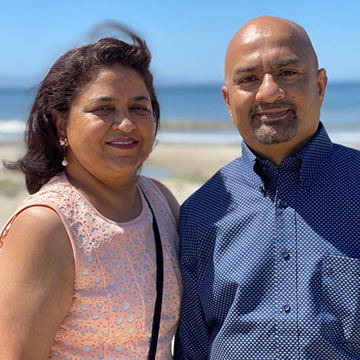Oral Appliances for Sleep Apnea
Oral appliance therapy for the treatment of obstructive sleep apnea (OSA) may be a good treatment choice for people who can’t tolerate CPAP therapy, who prefer another type of treatment, or for whom CPAP therapy is not effective at controlling their symptoms.
Oral appliances are custom-made mouthpieces that help increase the size of the airway in the back of the throat during sleep and reduce the collapse of the airway. This reduces the paused breathing events which is the tell-tale symptom of OSA. They are worn only when you sleep. Mandibular advancement devices (MADs) are one of the main types of oral appliances used in the treatment of OSA in adults and are custom-made by Dr. Chitgopekar to fit in your mouth. They are FDA-approved for the treatment of sleep apnea and are covered by your medical insurance.
Rapid maxillary expansion (RME) is another type of custom-fitted oral appliance to treat children who have been diagnosed with obstructive sleep apnea.
How do MADs work?
Mandibular advancement devices (MAD) are secured to the teeth and move your lower jaw forward. Moving the lower jaw repositions the tongue forward, pulling it out of the airway. This helps improve breathing by keeping your airway open while you sleep and helps reduce or eliminate snoring.
- MADs come in a variety of designs and can be either one-piece or two-piece devices, and vary in size, material, the number of teeth they cover, and how adjustable they are.
- Research shows that MAD therapy reduces the amount of paused breathing events during the night and increases the amount of oxygen in the blood.
- MAD therapy can also decrease daytime fatigue and improve blood pressure, cognitive function, mood, and overall well-being.
- For about 70% of people with OSA, MAD therapy can reduce the severity of their condition by more than half. And for a third of people, MAD therapy completely resolves their OSA symptoms.
How does an RME work?
Rapid maxillary expansion (RME) is an orthodontic treatment using a device, called an expander, to gradually widen the upper jaw over time. The expander is worn at all times and is custom-made to sit on the roof of the mouth and attach to the back upper teeth. RME is a treatment option typically recommended for children with OSA who have a narrow upper jaw, crossbite, or who have OSA following surgical removal of their tonsils and adenoids. The expander forces the upper jaw bones to gradually separate, which can help increase the size of the airway. Studies show that RME is highly effective in reducing the amount of paused breathing events seen in OSA in about 25% of children. In some children, a combination of RME and surgery to remove the tonsils and adenoids may be most effective.









